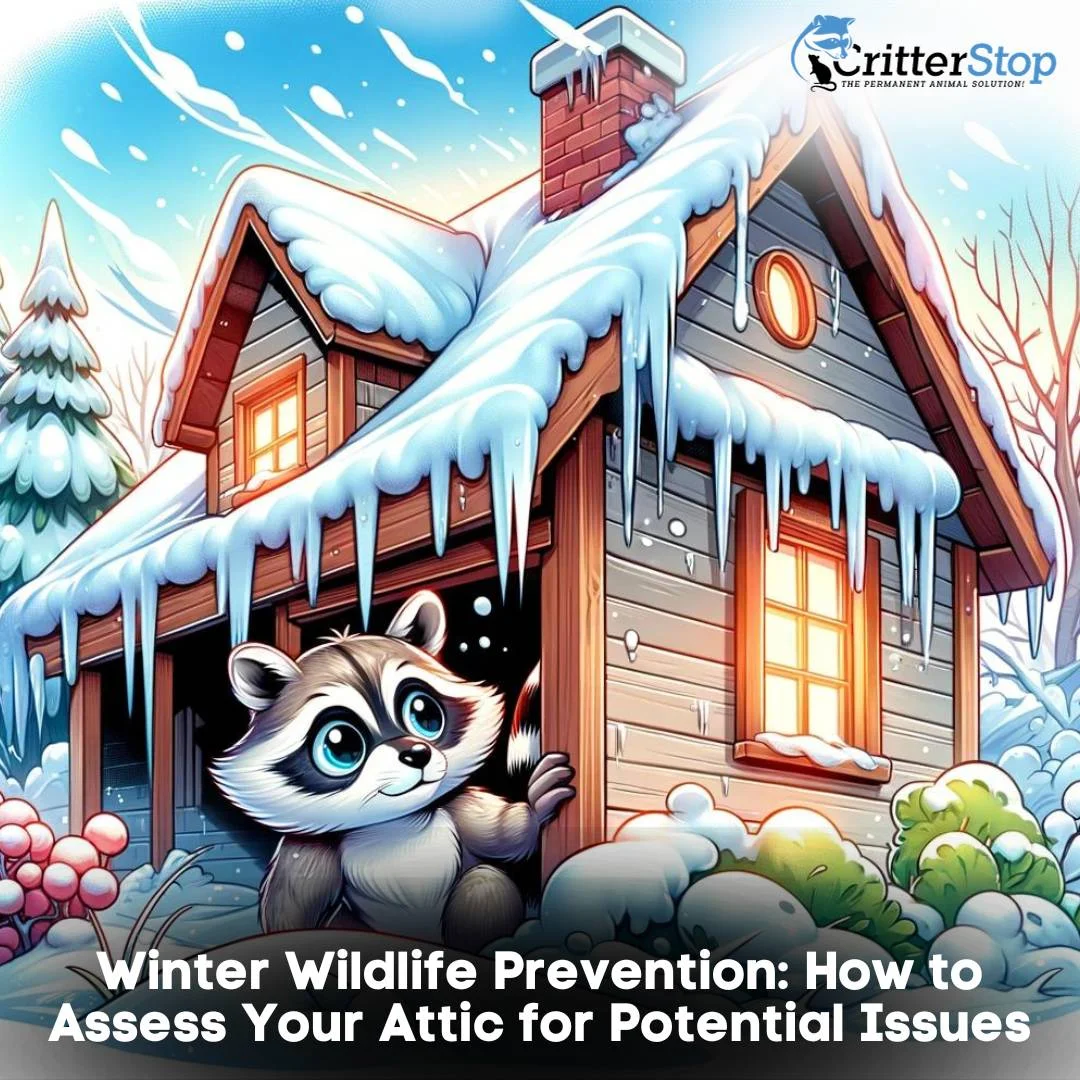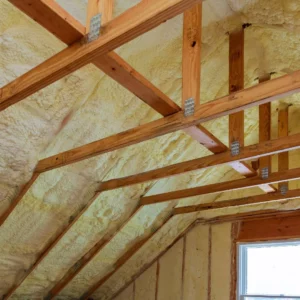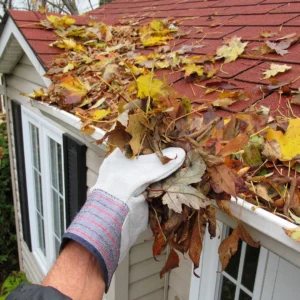
Winter is a season that brings a unique set of challenges when it comes to pest control. Animals seek warmth and shelter, and unfortunately, your attic may provide the perfect hideout for them. To ensure your home remains wildlife-free this winter, it's essential to assess your attic for potential issues. In this article, we will discuss the signs of damage to look for in your attic, as well as how to properly insulate it.
Having a well-maintained attic is essential for the overall health and safety of your home. Assessing your attic regularly can help you identify any potential issues before they become major problems. By being proactive, you can save yourself from costly repairs and ensure a comfortable living environment. Let's explore some important aspects of attic assessment.

Before you start assessing your attic, it's essential to know what signs of damage to look out for. One of the most obvious signs is the presence of droppings or urine stains. If you notice any of these, it's likely that critters have already invaded your attic. Rodents, such as rats or squirrels, can cause significant damage to your attic's structure and insulation. They can also chew through electrical wires, posing a fire hazard.
In addition to droppings, check for chewed wires or insulation. Rodents often gnaw on these materials to maintain their teeth. The sight of chewed wires or shredded insulation should raise a red flag, indicating the need for immediate action. Ignoring these signs can lead to further damage and potential safety hazards.
Lastly, keep an eye out for entry points such as holes or gaps in the walls, roof, or vents. These openings provide easy access for wildlife looking for shelter. By identifying and sealing these entry points, you can prevent critters from entering your attic in the first place.
Insulating your attic is crucial for keeping wildlife out and maintaining a comfortable indoor temperature. Proper insulation helps regulate heat flow, prevents energy loss, and reduces your utility bills. Here are some steps to follow when insulating your attic:
Start by sealing any openings or cracks that may serve as entry points for animals. Use a silicone-based sealant or sturdy materials such as steel wool to ensure a tight seal. Pay close attention to areas where pipes, wires, or vents pass through the attic walls or ceiling. These are common entry points for pests.
Additionally, consider installing screens or covers on your vents to prevent pests from entering. These screens allow proper airflow while keeping unwanted visitors out. Make sure the screens are securely attached to prevent animals from dislodging them.
When it comes to insulation, choose materials that are resistant to pests. Avoid using materials like fiberglass insulation, as rodents can easily nest in it. Instead, opt for spray foam insulation or cellulose insulation treated with pesticide. These options provide both insulation and protection against pests.
Proper insulation not only helps prevent wildlife from entering your attic, but it also provides energy efficiency benefits. By reducing heat transfer, insulation helps maintain a consistent indoor temperature, reducing the workload on your heating and cooling systems. This, in turn, leads to lower energy consumption and cost savings, making it a win-win situation for homeowners.
In conclusion, regularly assessing your attic for potential issues is crucial for maintaining a safe and comfortable home. By being vigilant and addressing any signs of damage promptly, you can prevent wildlife infestations and ensure proper insulation. Remember, a well-maintained attic not only protects your home but also contributes to energy efficiency and cost savings in the long run.

Hedges can provide an attractive border for your property, adding a touch of natural beauty to your surroundings. However, it's important to be mindful of the potential risks they can pose. While hedges can enhance the aesthetics of your home, they can also attract unwanted wildlife, creating a potential threat to your property and even your attic. To ensure the safety and security of your home, it is crucial to regularly prune your hedges and maintain a safe distance between them and your living space.
Overgrown hedges not only compromise the visual appeal of your property but also create a bridge for animals to access your home. When left unattended, hedges can become an open invitation for wildlife, providing them with an easy entry point into your living space. By regularly pruning your hedges, you eliminate this access point and discourage animals from venturing too close to your home. Furthermore, pruning promotes healthy growth, ensuring that your hedges remain lush and vibrant.
When it comes to pruning, it's essential to follow proper techniques. Start by removing any dead or diseased branches, as they can attract pests and compromise the overall health of your hedges. Additionally, trim back any overhanging branches that may be encroaching on your home's exterior. By maintaining a safe distance between your hedges and your home, you reduce the risk of wildlife intrusion and potential damage to your property.
In addition to regular pruning, it's advisable to create a physical barrier between your hedges and your home. This extra layer of protection can significantly reduce the chances of wildlife making their way into your living space. One effective method is to install a wire mesh fence at the base of your hedges. This sturdy barrier ensures that animals cannot tunnel through the base or squeeze through any gaps, providing you with peace of mind.
Another innovative approach to deter wildlife from approaching your home is to install motion-activated sprinklers near your hedges. These sprinklers are triggered by the movement of animals, releasing a sudden spray of water. Most animals are naturally averse to water, and the unexpected spray will discourage them from venturing too close to your home. This simple yet effective solution not only keeps wildlife at bay but also adds an element of surprise to your garden.
When installing motion-activated sprinklers, strategically position them near your hedges to ensure maximum coverage. By doing so, you create an invisible barrier that animals will think twice about crossing. This environmentally friendly approach not only protects your home but also maintains the integrity of your garden, as it does not rely on harmful chemicals or traps.
In conclusion, maintaining a safe distance between hedges and your home is essential for the well-being of both your property and the wildlife around it. Regular pruning and the implementation of physical barriers, such as wire mesh fences and motion-activated sprinklers, can help safeguard your home from unwanted animal intrusions. By taking these proactive measures, you can enjoy the beauty of your hedges while ensuring the security and tranquility of your living space.
Animals can be attracted to the scent of food in your trash, so it's crucial to prevent them from accessing it. Start by securing your trash containers with tightly fitting lids. Consider using bungee cords or weighty objects to hold the lids in place. Additionally, avoid placing your trash containers outside too early or overnight. Instead, wait until the morning of the scheduled pickup to minimize the time the containers are exposed.
If you live in an area known for wildlife activity, consider investing in trash containers specifically designed to resist animal intrusion. Look for containers with reinforced lids or even containers made from sturdy materials like metal. These containers provide an extra layer of defense against persistent critters.
Clear and functional gutters are essential for proper drainage and preventing water damage to your home. However, they can also serve as an entry point for wildlife if not properly maintained. Regularly cleaning your gutters is important, especially during winter when leaves and debris can accumulate. Use a sturdy ladder and gloves to remove any blockages, making sure to dispose of the debris properly.

To make gutter maintenance easier, consider installing gutter guards. These covers prevent debris from entering your gutters while still allowing water to flow freely. Gutter guards save you time and effort by reducing the frequency of gutter cleaning. Additionally, a properly installed gutter guard system can be an effective deterrent against wildlife trying to gain access to your home through the gutters.
Even the smallest holes in your walls can provide a point of entry for wildlife. It's important to repair these holes promptly to safeguard your home. Start by cleaning the area around the hole, removing any loose debris or paint. Next, apply a suitable patching compound to the hole, spreading it evenly. Once the compound is dry, sand it down to create a smooth surface. Finally, paint over the patched area to match the rest of the wall.
When repairing holes in your walls, it's essential to choose the right materials. Opt for patching compounds specifically formulated for interior walls. These compounds are easy to work with and provide a durable and seamless repair. Additionally, consider using mesh patches or adhesive-backed patches for larger holes, as these offer added strength and stability.
In addition to the specific measures mentioned above, there are general tips to safeguard your home from wildlife during winter. Keep your property clean and free of food debris, as this will attract animals. Trim tree branches that may provide access to your home's roof or upper floors. Seal any cracks or gaps in your foundation, walls, and windows to prevent animals from entering. Finally, consider consulting with a professional wildlife control service for additional guidance and assistance in mitigating wildlife issues.
By following these tips, you can assess your attic for potential issues and take the necessary steps to prevent wildlife from invading your home this winter. Act proactively to ensure a safe and pest-free living environment for you and your family.